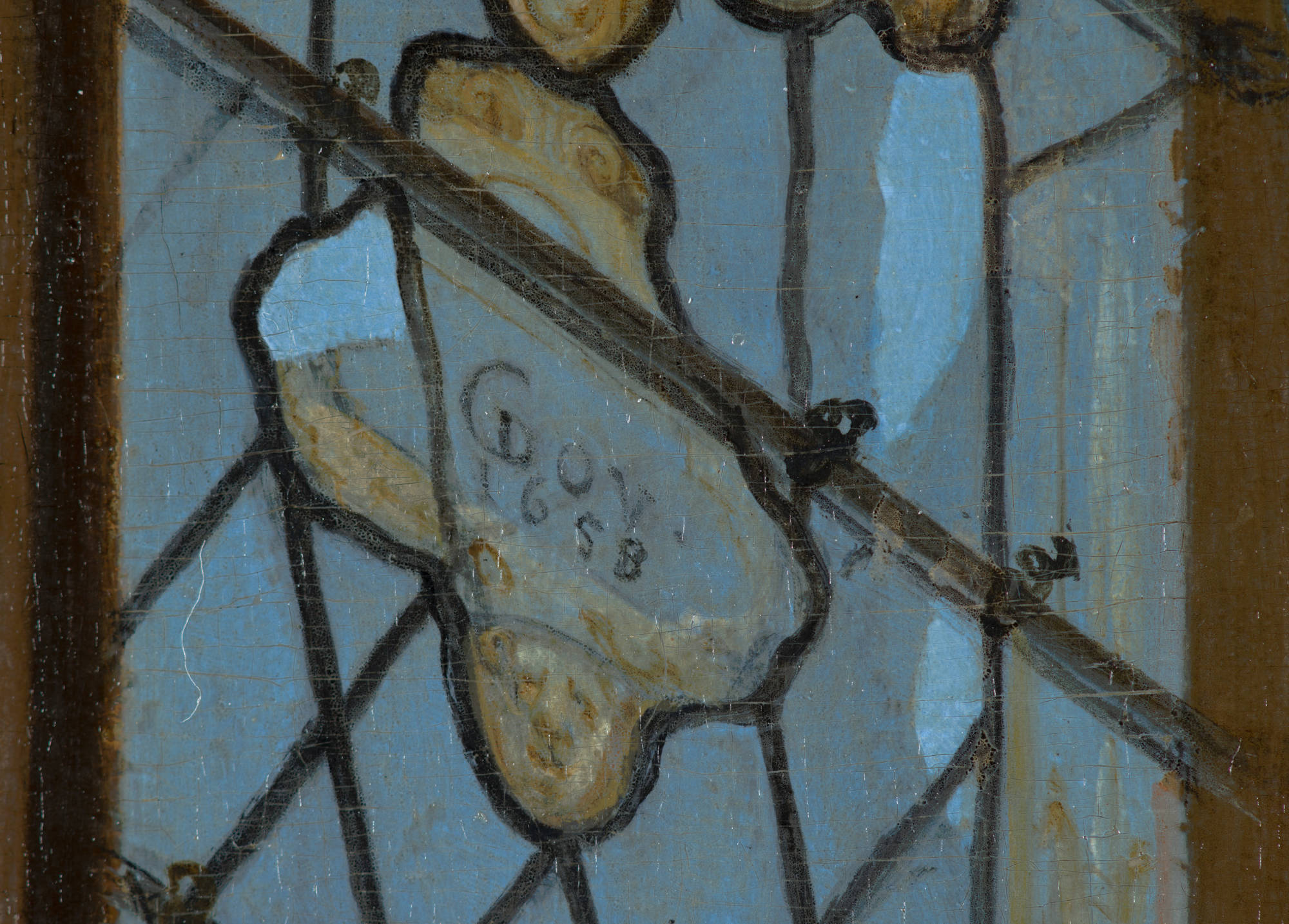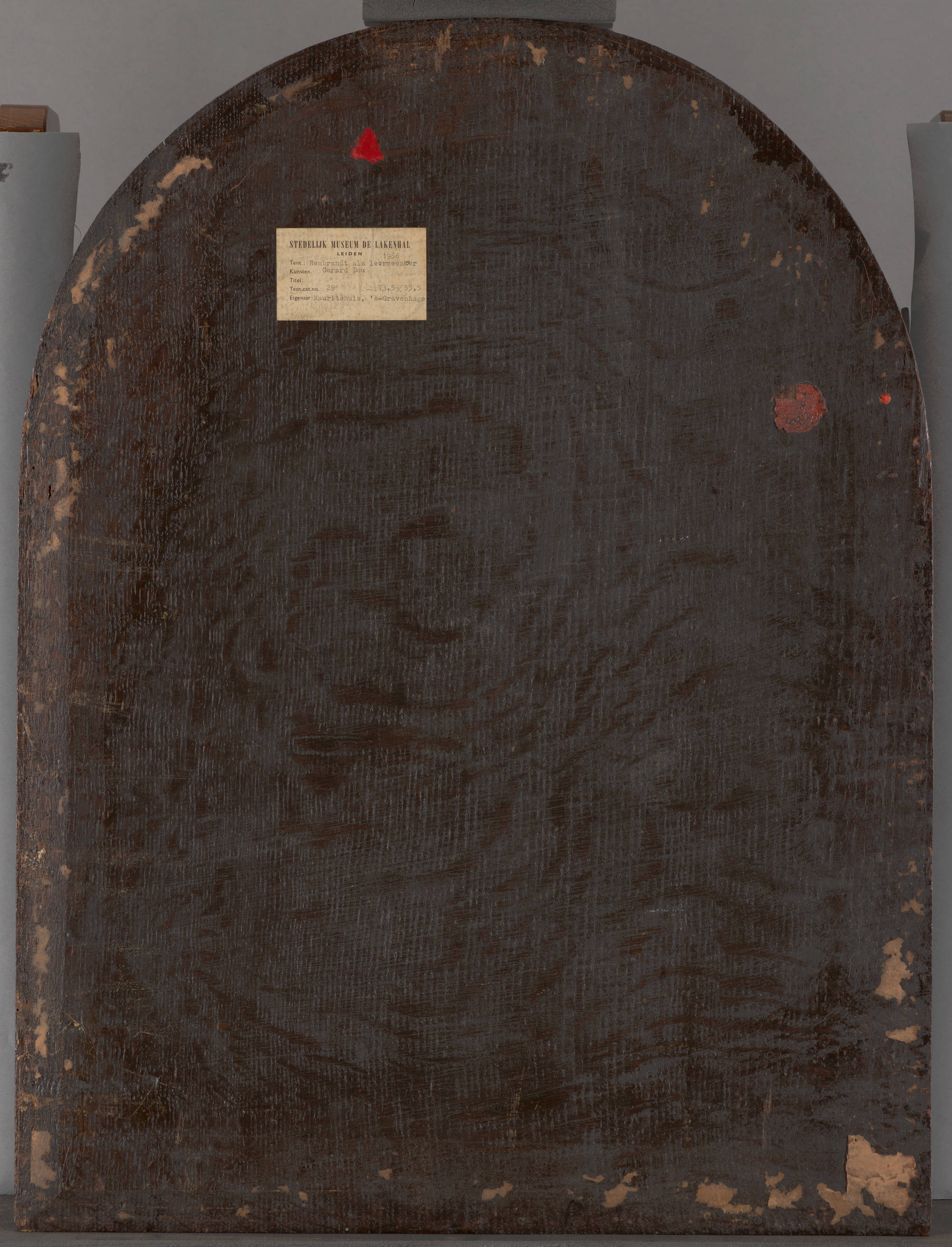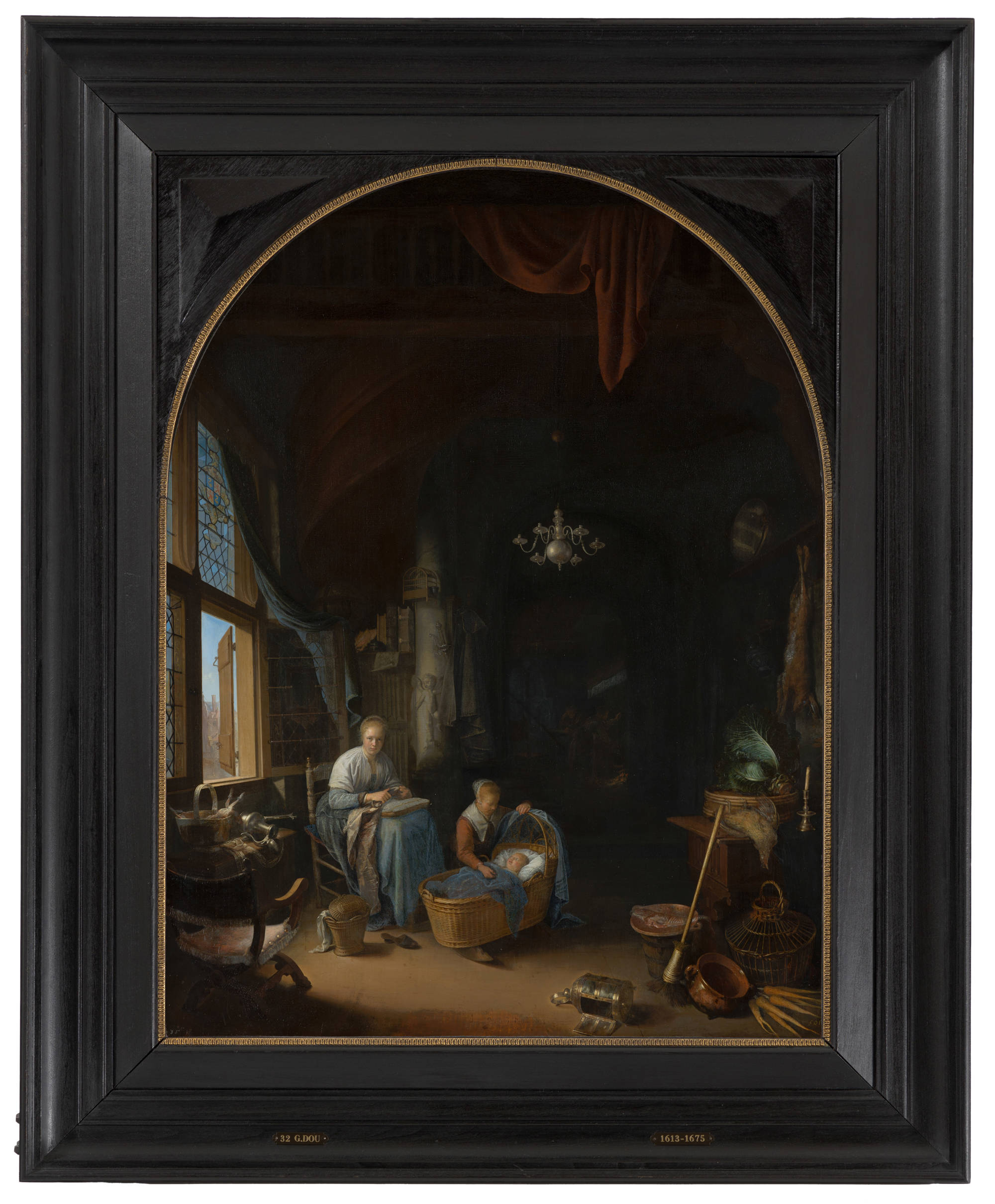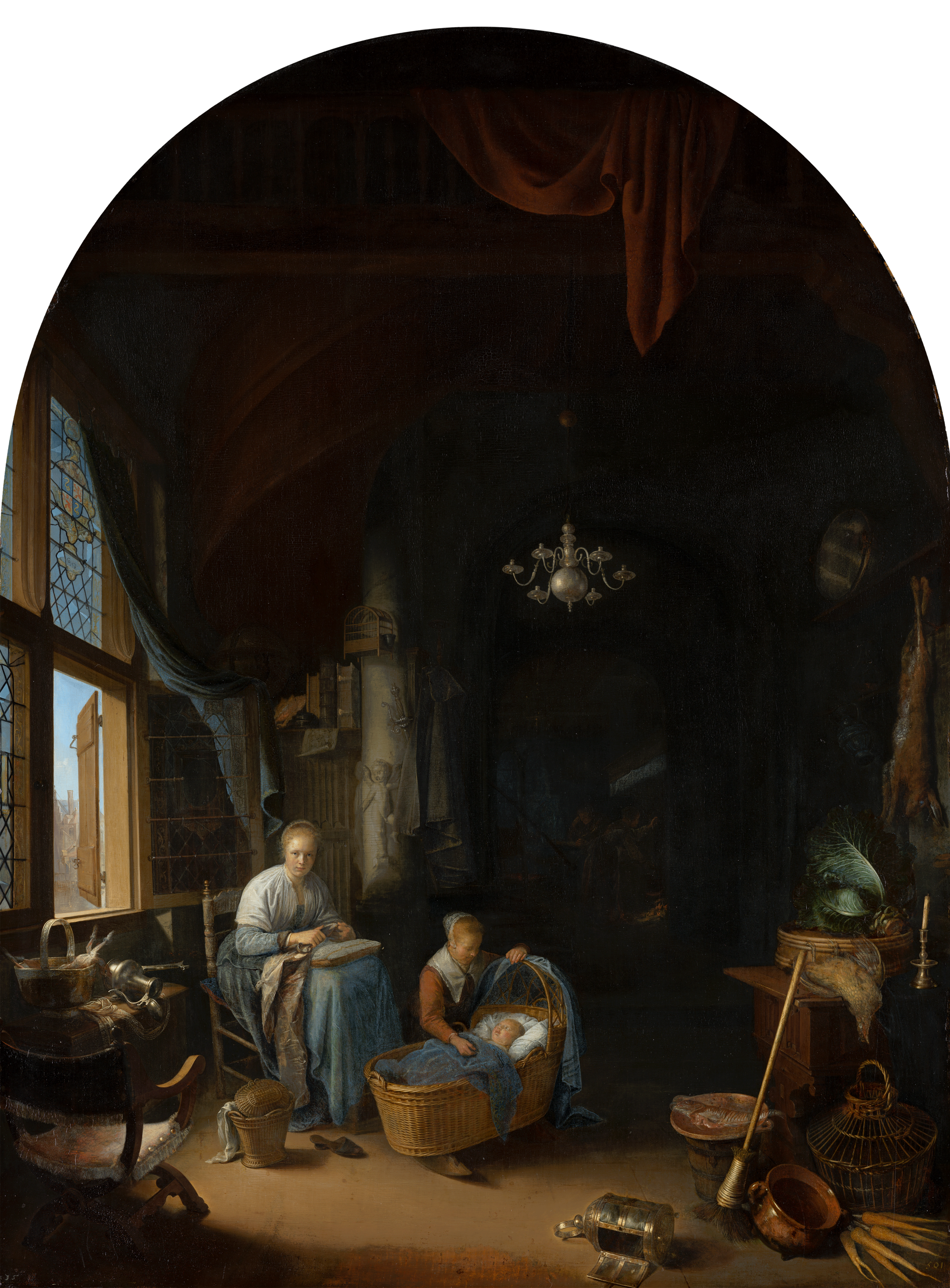At the beginning of 1628 Gerrit Dou started out as Rembrandt’s pupil at his Leiden studio. Rembrandt was still young; Dou was his first pupil, and one of the most talented. Dou would not become famous by making paintings in the style of his master, however, but with scenes in which the rendering of textures was elevated to the sole objective and brushstrokes had to be invisible. With this approach Dou founded his own school of painting, that of the Leiden fijnschilders, who included Frans van Mieris the Elder, Gabriel Metsu and Godfried Schalcken. The immense care with which Dou pursued his profession is eloquently illustrated by a famous anecdote told by the artists’ biographer Arnold Houbraken in his Groote Schouburgh der Nederlantsche Konstschilders en Schilderessen (1718-1721). He relates that Dou set up a large parasol in his studio over the easel, and that after entering his studio and seating himself at the easel he would wait ‘until the dust had settled’ before starting work.
In ‘The young mother’ we see a spacious, high room in which a young woman with her needlework on her lap sits near her child, a baby in a cradle. A maidservant sits beside the cradle. The bright daylight streaming in through the window brings out the surfaces of the diverse objects strewn about the room to fine effect. In the background we can make out a few figures in a dimly lit kitchen. The qualities of Dou’s art as a fijnschilder emerge most clearly in the wicker cradle, the gleaming kitchenware and the young woman’s face.
Scenes featuring mothers with their children, busying themselves with domestic tasks in an orderly interior, were sometimes interpreted as images of virtue. It is unclear to what extent this interpretation is justified here, since the staffage gives no explicit confirmation. The most striking detail is the relief with little angels on the column in the middle of the room, whose meaning is unfortunately obscure. The coat and sabre beside it allude to the absent husband and father. Objects such as the globe on the cupboard, the inkwell, and the folio volumes, the customary attributes of study, would have been attributed to his domain by seventeenth-century viewers.
In 1660 the States of Holland and West Friesland decided to honour the new king of England, Charles II (1630-1685), who had spent some time in exile in The Hague, with a diplomatic gift. Besides Italian paintings, for which the king had a special fondness, this ‘Dutch Gift’ also included a work by Gerrit Dou: ‘The young mother’. The king was so delighted with this painting that he offered Dou a position as court painter, which Dou however declined. For over thirty years the painting was one of the showpieces of the large Royal Collections in England, until stadholder William III (1650-1702), who had become king of England in 1689, brought it to the Netherlands along with some thirty other works.
(this is a reworked version of a text published in in: P. van der Ploeg, Q. Buvelot, Royal Picture Gallery Mauritshuis: A princely collection, The Hague 2005, p. 180)









